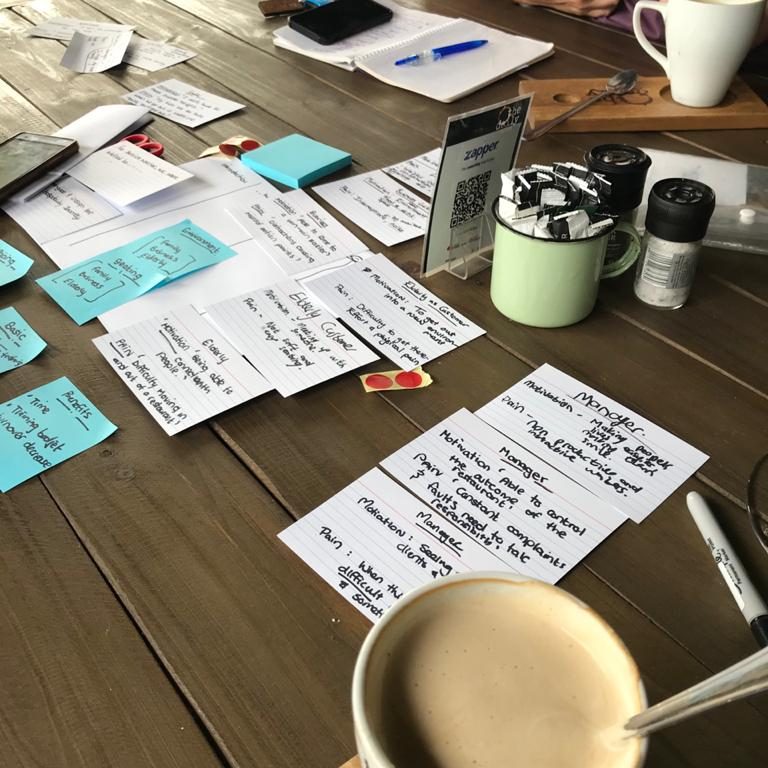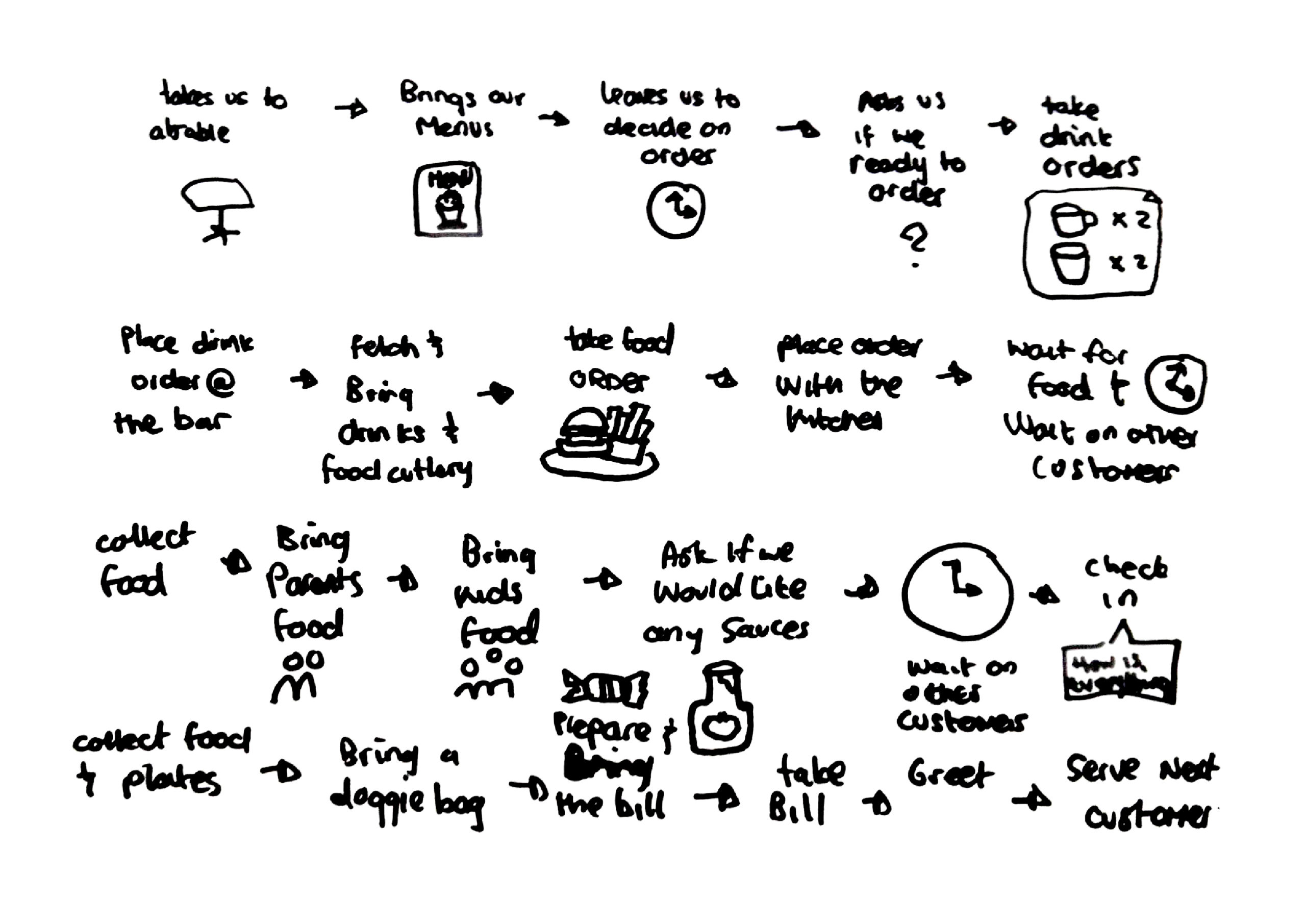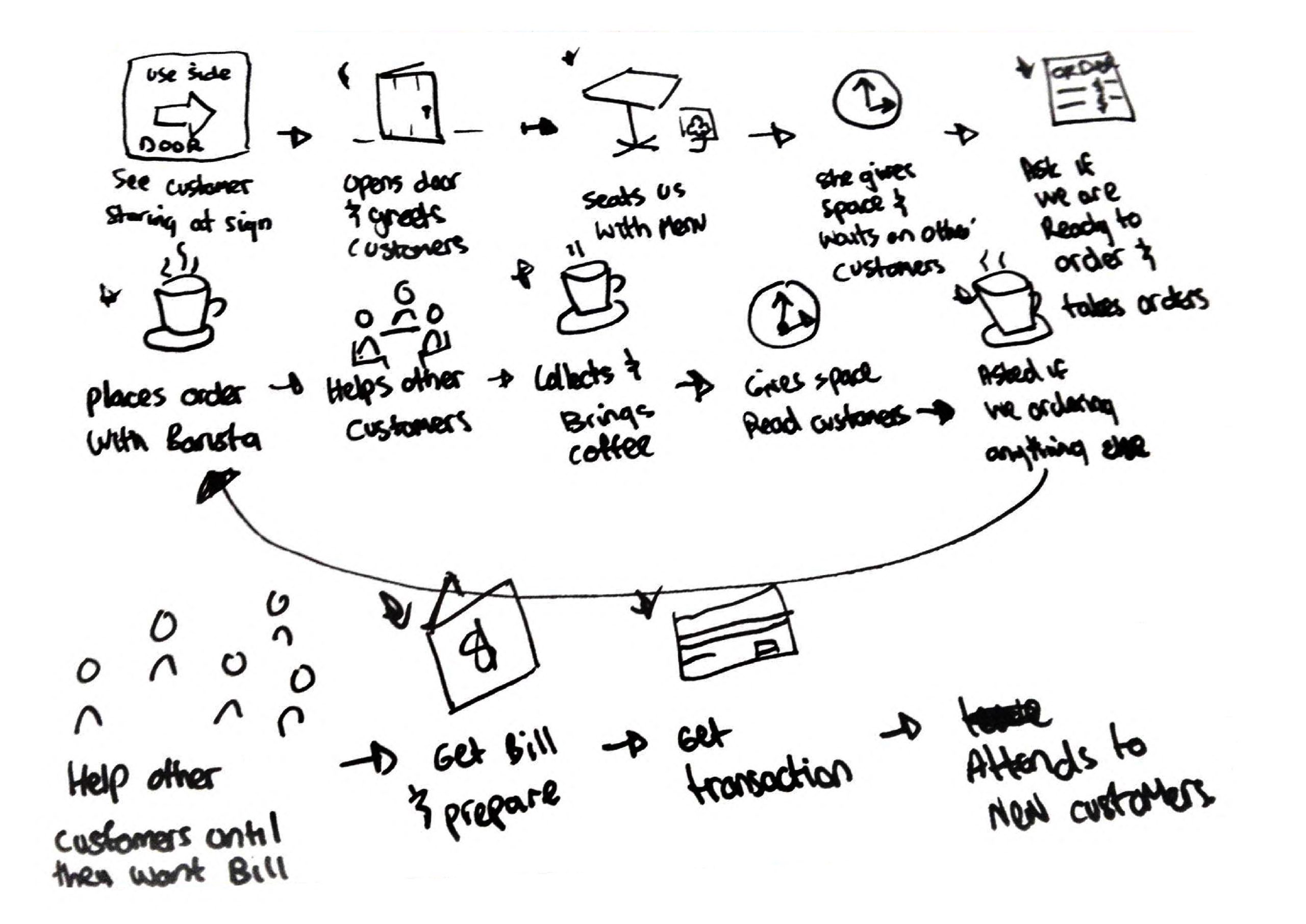Service Warrior
We worked with Brandlove and a few globally recognised restaurants to redesign the ideal restaurant training experience.

The Challenge
We wanted to find away to upskill the people inside the hospitality industry within South Africa. Our Brief was to go out and map the experiences of a few customers and the employees within the hospitality industry. We were tasked to find touchpoints which typically caused moments of misery and then prototype solutions that could be trained to employees.
Our key objectives were:
- Interviewing customers and employees in the hospitality industry.
- Identifying moments of Misery
- Improving the training journey of employees
Client
Brandlove
Sector
Hospitality Industry
What we did
- Personas
- Empathy Mapping
- Assumption based Journey Mapping
- Research based Journey Mapping (current and future Journeys)
- Design thinking
- Contextual and in-depth interviews
- Prototyping
- User testing
- Visual design
Our Approach
- Using service design thinking we initially mapped out an assumption based journey this allowed us to be aware of the assumptions we as a team and enabled us to put them aside. this allowed us to go into a research based phase doing mystery shopping and interviews with a few stakeholders in our journeys.
- Once we harvested enough information we came back to collate the information and mapped the current journey, highlighting the pitfalls. These pitfalls allowed us to design an ideal or more future based journey, paying attention to themes that could arise through overlap.
- With these themes we started to ideate and prototype possible solutions, these we took through and started our user testing. (Our prototypes were mostly prototypes of interactions, service processes and experiences, prototypes of physical objects and prototypes of environments, spaces and architecture).
- During our first round of interviews we got a few bad reviews regarding the use of digital objects which moved this kind of solution to the last possible resort. Our testing included most of our original stakeholders, however we decided to include another we felt the additional stakeholder was someone would had the influence to advocate and implement training going forward. After our testing rounds we had both good feedback and some not so good feedback this allowed us to back and iterate to include the suggestions given to us by our stakeholders.
- For motivation of the new training options we looked to identify benefits for both the business and the customer.


Assumptions based sketches with team
The Results and Benefits
With the completion of this project we are now able to move into a phase 2.
This phase allowed us to identify benefits and engage our main stakeholder.
This training programme will:
- Empower the employees
- Teach employees basic skills
- Minimize business expenses
- Decrease turnover time
Feedback from users were positive, most related to the layout of the restaurants and lack of
empowerment to ensure the best products go out to the customers.
Our suggestions is that the manger gets equipped with the training knowledge and then trains his new employees.
The journey starts at the on-boarding stage.


